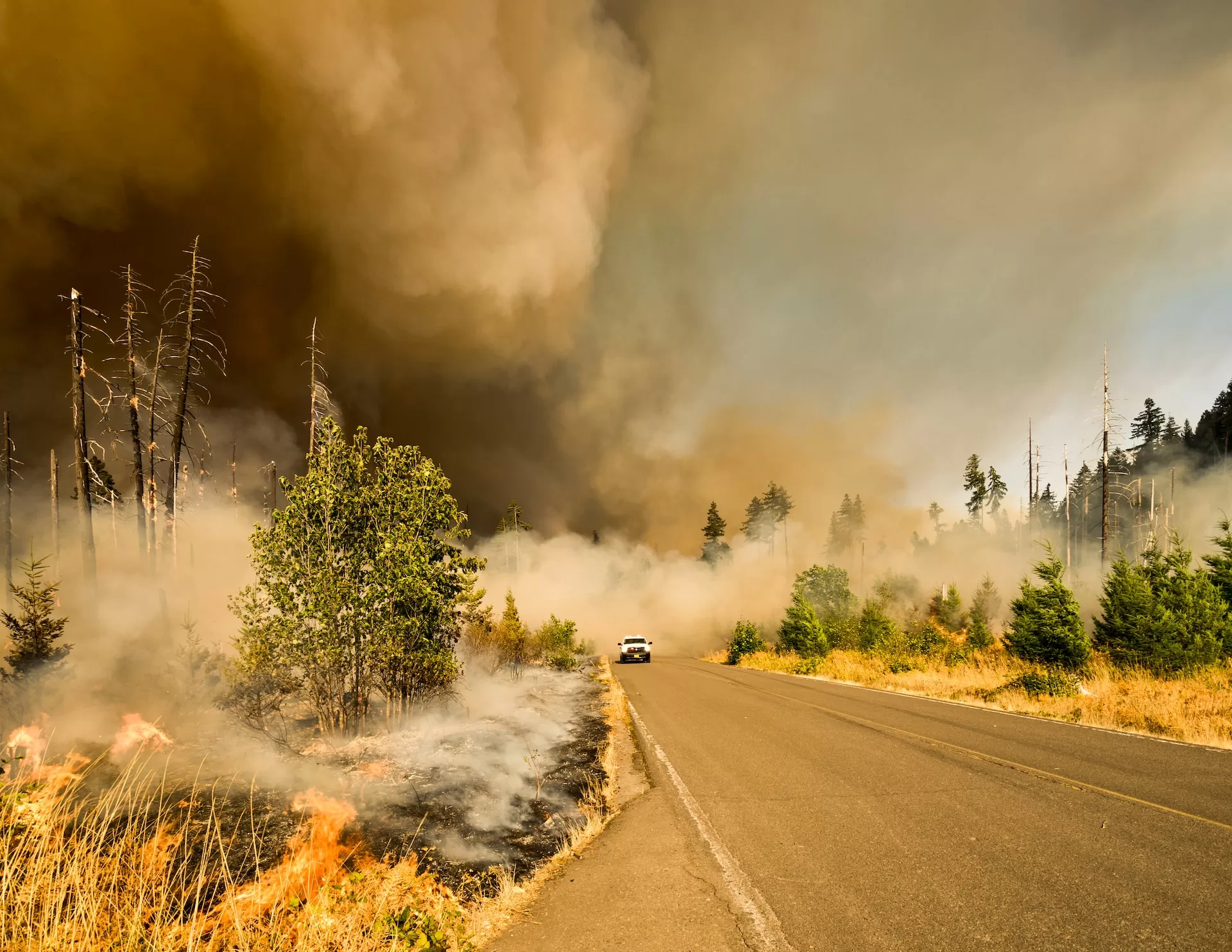
Climate change has led to an unprecedented rise in natural disasters. At the same time, AI technology has developed enough to help predict events like hurricanes and floods, potentially saving countless lives. Here are the most promising uses for AI and machine learning in disaster mitigation.
Predicting Earthquakes
Researchers from Stanford’s School of Earth, Energy & Environmental Sciences have developed a deep-learning model to detect seismic activity. The algorithms can identify the start of two different types of seismic waves and detect even weak earthquakes that current methods often overlook.
Scientists applied the model to five weeks of continuous earthquake data and located 200% more earthquakes than traditional technology found. If this type of AI software catches on, it could help people evacuate their homes before an earthquake occurs. It could also prevent people from returning home too early and encountering aftershocks.
(function($){
“use strict”;
$(document).ready(function(){
function bsaProResize() {
var sid = “32”;
var object = $(“.bsaProContainer-” + sid);
var imageThumb = $(“.bsaProContainer-” + sid + ” .bsaProItemInner__img”);
var animateThumb = $(“.bsaProContainer-” + sid + ” .bsaProAnimateThumb”);
var innerThumb = $(“.bsaProContainer-” + sid + ” .bsaProItemInner__thumb”);
var parentWidth = “728”;
var parentHeight = “90”;
var objectWidth = object.parent().outerWidth();
if ( objectWidth 0 && objectWidth !== 100 && scale > 0 ) {
animateThumb.height(parentHeight * scale);
innerThumb.height(parentHeight * scale);
imageThumb.height(parentHeight * scale);
} else {
animateThumb.height(parentHeight);
innerThumb.height(parentHeight);
imageThumb.height(parentHeight);
}
} else {
animateThumb.height(parentHeight);
innerThumb.height(parentHeight);
imageThumb.height(parentHeight);
}
}
bsaProResize();
$(window).resize(function(){
bsaProResize();
});
});
})(jQuery);
(function ($) {
“use strict”;
var bsaProContainer = $(‘.bsaProContainer-32’);
var number_show_ads = “0”;
var number_hide_ads = “0”;
if ( number_show_ads > 0 ) {
setTimeout(function () { bsaProContainer.fadeIn(); }, number_show_ads * 1000);
}
if ( number_hide_ads > 0 ) {
setTimeout(function () { bsaProContainer.fadeOut(); }, number_hide_ads * 1000);
}
})(jQuery);
Forecasting Floods
Climate change has caused a dramatic increase in flooding. In July 2022, the U.S. experienced two one-in-1,000-year rainfall events within two days of each other, leading to devastating floods that engulfed homes and claimed several lives. Although floods cause billions of dollars in damage annually and affect hundreds of millions of people, current forecasting technology often fails to help people evacuate in time.
Now, some researchers hope AI can help predict heavy rainfall. Google’s AI-based Flood Hub software is available in 80 countries, warning people of floods up to a week in advance. Users can look at the world map to see rainfall and river level predictions for each region, with a red icon indicating the highest risk. Google is working on making the technology available in Search and Maps.
Detecting Wildfires
By the time firefighters extinguished the 2018 Camp Fire, it had claimed the lives of 85 people and burned for two weeks, making it the deadliest wildfire in California’s history. Could AI have predicted the disaster and saved the towns of Paradise and Concow?
The California Department of Forestry and Fire Protection has started using high-tech cameras and AI to detect smoke and fire. A network of cameras mounted on platforms scan the horizon for wildfires, and researchers are training the software on what is and is not a fire.
One benefit of using cameras is that they can be where people cannot, such as in remote wilderness locations. Hopefully, this new technology will learn to alert firefighters when it detects a blaze and help prevent future disasters.
Predicting Hurricanes
NASA’s IMPACT team recently partnered with tech company Development Seed to track Hurricane Harvey. Using machine learning and satellite imagery, the Deep Learning-based Hurricane Intensity Estimator estimates a hurricane’s wind speed as soon as satellite data reaches Earth.
The software’s neural networks essentially automate the Dvorak technique that matches satellite imagery to known patterns. By analyzing hurricane data in almost real time, meteorologists may be able to warn the public of impending hurricanes before disaster strikes.
Issuing Smarter Alerts
In addition to predicting disasters, AI could help by sending out timely alerts to save money, keep people informed and aid in the evacuation process.
For example, U.S. Coast Guard Command Centers have people listening for radio distress calls for 12 hours a day, which entails listening almost entirely to hoax calls or static. AI could relieve employees of this tedious duty by analyzing radio traffic to detect distress signals. This technology could help issue faster alerts to activate Coast Guard rescue missions.
Another potential use for AI would be to analyze CCTV footage in real time inside buildings, sounding an alarm if it detected smoke or earthquake-related tremors. A rapid response time would allow people to evacuate quickly.
(function($){
“use strict”;
$(document).ready(function(){
function bsaProResize() {
var sid = “33”;
var object = $(“.bsaProContainer-” + sid);
var imageThumb = $(“.bsaProContainer-” + sid + ” .bsaProItemInner__img”);
var animateThumb = $(“.bsaProContainer-” + sid + ” .bsaProAnimateThumb”);
var innerThumb = $(“.bsaProContainer-” + sid + ” .bsaProItemInner__thumb”);
var parentWidth = “728”;
var parentHeight = “90”;
var objectWidth = object.parent().outerWidth();
if ( objectWidth 0 && objectWidth !== 100 && scale > 0 ) {
animateThumb.height(parentHeight * scale);
innerThumb.height(parentHeight * scale);
imageThumb.height(parentHeight * scale);
} else {
animateThumb.height(parentHeight);
innerThumb.height(parentHeight);
imageThumb.height(parentHeight);
}
} else {
animateThumb.height(parentHeight);
innerThumb.height(parentHeight);
imageThumb.height(parentHeight);
}
}
bsaProResize();
$(window).resize(function(){
bsaProResize();
});
});
})(jQuery);
(function ($) {
“use strict”;
var bsaProContainer = $(‘.bsaProContainer-33’);
var number_show_ads = “0”;
var number_hide_ads = “0”;
if ( number_show_ads > 0 ) {
setTimeout(function () { bsaProContainer.fadeIn(); }, number_show_ads * 1000);
}
if ( number_hide_ads > 0 ) {
setTimeout(function () { bsaProContainer.fadeOut(); }, number_hide_ads * 1000);
}
})(jQuery);
Harnessing the Power of AI
Artificial intelligence is revolutionizing disaster forecasting. Meteorologists have already used it to evacuate people who would otherwise be in the direct path of oncoming storms, such as during India’s Cyclone Phailin in 2013.
The technology will likely save countless lives as it becomes even more refined. Someday, instead of looking at the skies, we may only have to look at a screen to know when to board up the windows.
The post Why We Need AI to Keep People Safe from Natural Disasters appeared first on Datafloq.







